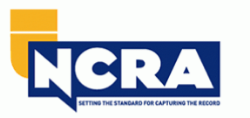All Concerning Court Coverage: Important Services That Enhance Legal Communication
Court reporting functions as a cornerstone of effective legal communication. It assures the accurate transcription of procedures, consequently cultivating quality amongst legal experts. Vital services such as real-time reporting and video depositions play a considerable role in this process. As technology advances, the landscape of court coverage remains to change. Recognizing these dynamics reveals the more comprehensive ramifications for the legal community and its stakeholders. What exists ahead in this ever-evolving field?
The Duty of Court Reporters in the Legal System
Stenotype reporter offer a necessary function within the lawful system by diligently catching and transcribing talked dialogue throughout court process. Their work assurances that an accurate and complete document of the procedures is kept, which is vital for the allure process and for future reference. Court press reporters use customized equipment to transcribe talked words, frequently in real-time, allowing attorneys, courts, and other lawyers to reference the discussion immediately.In addition to recording tests, court press reporters are also in charge of videotaping depositions, hearings, and other lawful events, giving a detailed account of different lawful communications. They have to possess a deep understanding of legal terms and procedures to precisely share the nuances of discussions. By protecting the stability of lawful discussions, stenotype reporter play an essential duty in upholding justice and promoting transparency within the judicial system. Their knowledge is indispensable in keeping the authorities record of lawful procedures.
Real-Time Reporting: Linking the Interaction Space
Real-time coverage functions as an essential tool in the legal sector, enabling immediate accessibility to recorded discussion throughout court proceedings. This innovation enables stenotype reporter to supply prompt message output that can be seen by attorneys, courts, and various other events entailed in the situation. As an outcome, real-time reporting considerably improves interaction and cooperation, minimizing misunderstandings and assisting in more effective decision-making. With the capability to promptly refer back to talked words, attorneys can concentrate on approach as opposed to memorization. In addition, this solution sustains individuals with hearing disabilities, ensuring that all celebrations can actively take part in the proceedings. By bridging the communication void, real-time reporting promotes an extra inclusive lawful environment. The immediate schedule of transcripts can speed up trial procedures, inevitably contributing to an extra effective judicial system. In a busy lawful landscape, real-time coverage proves important for keeping quality and accuracy in communication.
Video Depositions: A Modern Approach to Documents
Taking advantage of the power of modern technology, video clip depositions have changed the paperwork process in lawful proceedings. durham reporting. These depositions give a compelling aesthetic and auditory record of witness testimonies, permitting a much more nuanced understanding of the context and attitude of the individuals included. Unlike traditional written depositions, video recordings capture non-verbal cues, face expressions, and tone of voice, which can substantially affect the analysis of testimony.Moreover, video clip depositions assist in remote engagement, making it possible for lawyers and witnesses to engage from various locations, therefore simplifying the procedure and minimizing logistical difficulties. This modern strategy also boosts the availability of testimony for courts and courts, permitting a much more appealing review throughout tests. As lawyers remain to accept innovative approaches, video clip depositions stand apart as an important tool that not only improves documents but additionally enriches the general legal communication landscape
Transcription Solutions: Accuracy and Reliability
Transcription solutions play a vital function in making sure the accuracy of lawful documents, where accuracy is paramount. Trustworthy records not only show the web content accurately but additionally improve the effectiveness of the lawful procedure by supplying prompt access to necessary info. This combination of accuracy and time effectiveness underscores the significance of professional transcription in court reporting solutions.
Relevance of Precision
Precision and dependability stand as cornerstones in court coverage solutions, especially when it pertains to transcription. In legal contexts, the accuracy of transcribed documents is extremely important, as even small errors can cause significant repercussions. Stenotype reporter should meticulously catch every word talked throughout proceedings to guarantee that all testimonies and arguments are properly mirrored. This precision aids in preserving the integrity of the judicial procedure, enabling legal experts to rely upon records for charms, instance research studies, and record-keeping. Additionally, accurate transcription fosters effective communication amongst attorneys, courts, and various other stakeholders, lessening misconceptions and possible disputes - durham reporting. Subsequently, the importance of precision in court coverage can not be overemphasized, offering as a crucial element in supporting justice and transparency within legal systems

Time Performance Advantages
Efficient court reporting solutions not just focus on accuracy but likewise considerably enhance time administration in lawful procedures. By offering punctual and reliable transcription services, they enable legal professionals to concentrate on instance technique instead of management jobs. The speedy delivery of transcripts warranties that attorneys can get ready for hearings and tests without unnecessary hold-ups. This immediacy sustains prompt decision-making, which is vital in the fast-paced legal atmosphere. Additionally, exact records minimize the requirement for alterations, decreasing back-and-forth communication and conserving valuable time. By improving the documents procedure, court coverage services add to overall productivity, allowing legal entities to operate extra successfully and effectively, inevitably benefiting all events included in the lawful procedure.
Captioning and Subtitling: Decriminalizing Procedures Accessible

Captioning and subtitling play an important duty in making legal proceedings accessible to a bigger audience, specifically for people with hearing disabilities. These solutions guarantee that all spoken dialogue, in addition to appropriate audio hints, are accurately recorded in real-time. By transforming acoustic info right into visual message, captioning allows individuals who are deaf or hard of hearing to totally engage with legal procedures, ensuring they can adhere to statements, arguments, and judicial directions without missing essential information.Moreover, captioning and subtitling foster inclusivity within the legal system, promoting equal participation in courtrooms and lawful setups. These solutions not just profit those with disabilities however also aid non-native speakers and people who might fight with intricate lawful terms. By improving comprehension, captioning and subtitling eventually sustain the principles of justice and fairness, making legal procedures a lot more clear and easily accessible to everybody entailed.
Test Presentation Assistance: Enhancing the Court Experience
In addition to captioning and subtitling, look at more info test presentation support greatly boosts the court experience by offering lawyers with the tools they need to successfully connect their case to the judge and jury. This solution encompasses an array of technologies, consisting of visual help, animations, and digital displays, which can make clear complicated info and make disagreements a lot more persuasive.Trial presentation professionals function very closely with legal teams to prepare and arrange products, guaranteeing that visuals are integrated with oral debates. This collective approach not just help in preserving the court's attention yet likewise fosters an extra engaging environment.Moreover, real-time updates and adjustments during the test permit lawyers to respond dynamically to developments in case. By boosting the presentation of proof and statements, test discussion assistance plays a necessary duty in enhancing the overall effectiveness of legal communication in the court, eventually adding to the search of justice.
The Future of Court Coverage: Adjusting to Technical Advances
As the legal landscape develops, the court reporting profession faces substantial modifications driven by technical advancements. Embracing digital tools, remote reporting remedies, and the assimilation official website of synthetic intelligence will be crucial for court press reporters to continue to be pertinent and effective. These advancements promise to enhance the precision and availability of legal documentation in an increasingly digital globe.
Taking On Digital Equipment
Although numerous traditional court reporting approaches have actually stood the test of time, the market is progressively welcoming digital tools that enhance performance and precision. These developments include computer-aided transcription (CAT) software, which allows court press reporters to generate records a lot more rapidly and with fewer errors. In addition, cloud-based storage space services allow safe and secure and very easy accessibility to documents, advertising collaboration amongst legal groups. Digital audio and video recording modern technologies are also being incorporated into court coverage, offering a comprehensive document of proceedings. As the lawful landscape evolves, the consolidation of these devices not only enhances workflows however additionally satisfies the growing need for faster and much more reliable lawful communication. The future of court coverage exists in the smooth blending of typical skills with cutting-edge innovation.
Remote Reporting Solutions

Artificial Intelligence Combination
Synthetic intelligence is changing court coverage by boosting accuracy and efficiency in the transcription process. AI-driven tools can rapidly convert spoken language into text, substantially reducing the moment needed for typical transcription methods. These modern technologies use innovative formulas to pick up from different legal terms, making certain specific documents of court proceedings. AI systems can flag variances and mistakes, permitting court press reporters to concentrate on nuances that require human expertise. As the legal landscape develops, the combination of AI in court reporting not only enhances process yet additionally sustains press reporters in supplying high-quality outcome. Eventually, accepting these technological developments places the market for boosted efficiency and enhanced communication in legal contexts, paving the way for a more reliable future.
Regularly Asked Questions
What Qualifications Do Court Reporters Need to Operate In the Lawful Field?
Court reporters generally require a secondary school diploma, specialized training in court reporting, and accreditation from recognized companies. Proficiency in shorthand or voice writing is crucial, along with solid language and communication abilities.
Just How Much Do Court Reporters Generally Earn in Various Areas?
Stenotype reporter' earnings differ significantly by region. In city locations, they may gain between $60,000 to $100,000 yearly, while those in rural areas generally earn lower wages, averaging $40,000 to $70,000 depending upon need and experience.
What Technologies Do Court Reporters Use During Their Work?
Stenotype reporter make use of different modern technologies including stenographic devices for real-time transcription, audio recording tools for additional documents, and specialized software for editing and formatting transcripts, guaranteeing precision and performance in capturing legal procedures. - durham reporting
Just How Can One Come To Be a Certified Stenotype Reporter?
To end up being a qualified stenotype reporter, individuals should complete an approved court reporting program, pass required assessments, and accomplish any kind of state-specific licensing requirements, demonstrating proficiency in transcription, legal terminology, and courtroom procedures vital for the profession.
Are Court Coverage Providers Available for Non-Legal Occasions?
Court reporting solutions can undoubtedly be made use of for non-legal occasions. These solutions usually deal with numerous occasions, such as meetings or workshops, offering precise transcriptions and helping article source in efficient communication beyond standard lawful setups.
 Jennifer Grey Then & Now!
Jennifer Grey Then & Now! Romeo Miller Then & Now!
Romeo Miller Then & Now! Michael C. Maronna Then & Now!
Michael C. Maronna Then & Now! Daryl Hannah Then & Now!
Daryl Hannah Then & Now! Jeri Ryan Then & Now!
Jeri Ryan Then & Now!